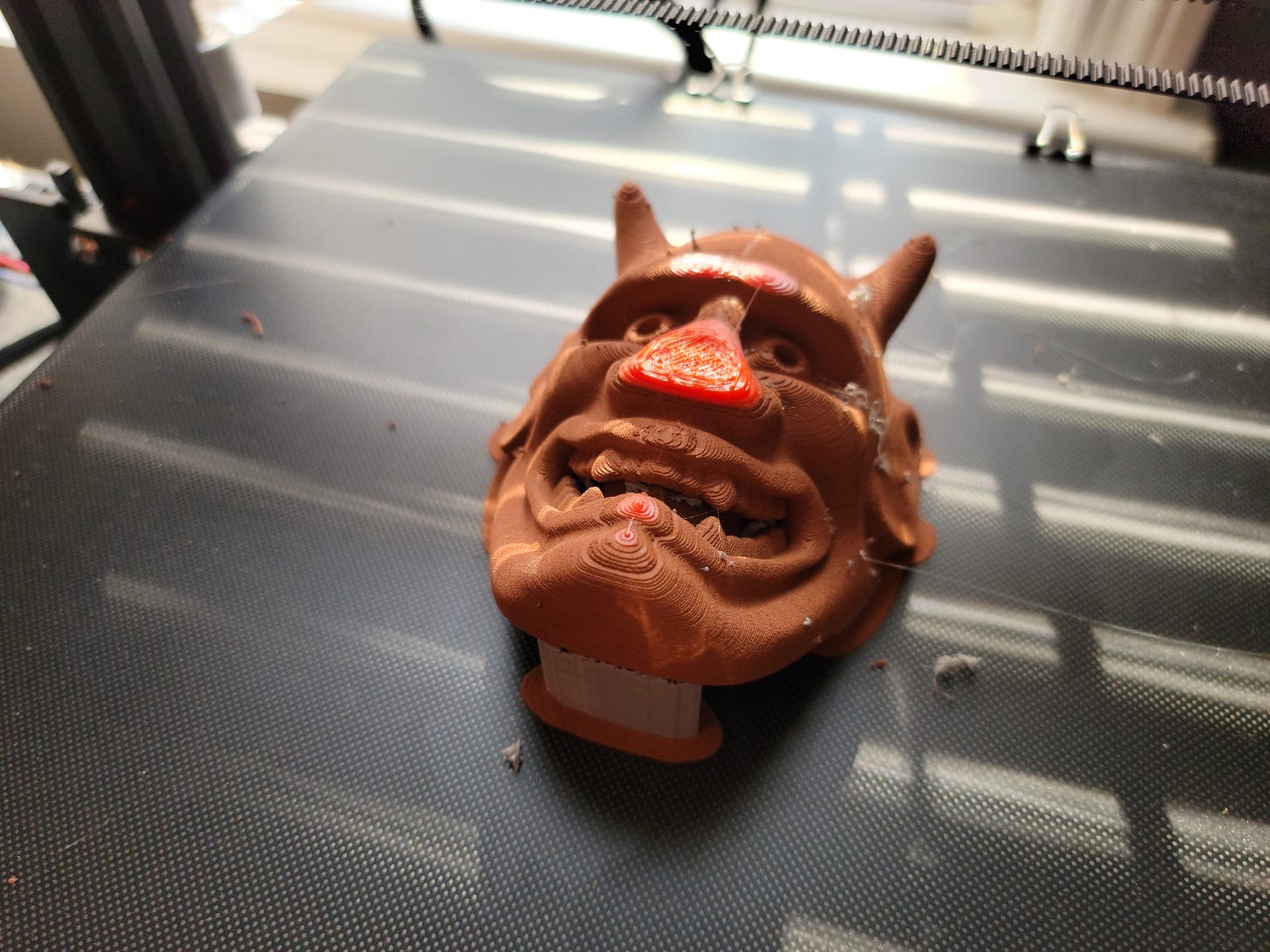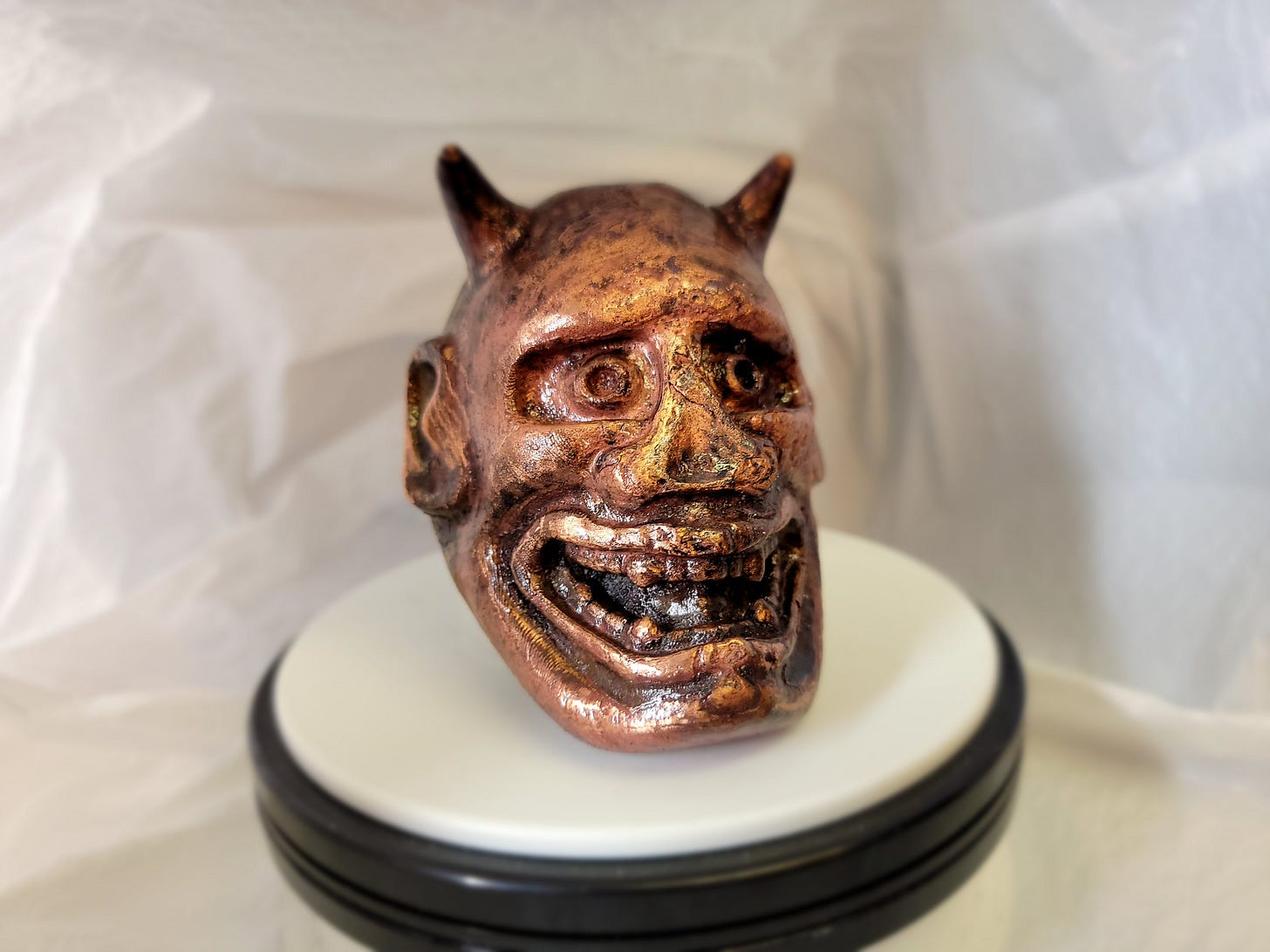Making Masks | Seeking Yugen (Hannya)
a journey in making Noh masks using a modern additive approach
Hello readers 👋
This is my first post here and I'm excited to share my experiences with additive manufacturing in my workshop (cough cough… garage).
But…
Today I'm not writing about using A/M for gears, widgets or even for a cracked system rim-riding grip configuration build, but instead as a means of expression.
Noh masks have always been interesting to me and until recently, the thought of crafting one was simply out of the question, since the skill required to produce a quality mask takes years of work.
That is, until I garnered enough confidence after this past year of experimenting with The Virtual Foundry's filament with my regular FDM 3D printer for producing metal parts to revisit the idea.
As with all additive manufacturing, the first step (after the idea of course) is to design your piece (or find it on thingiverse) in 3D and send it to the printer
The above Hannya mask is printed in VF’s copper filament which is 90% copper by weight and 10% PLA equivalent binder.
The printing process is very straightforward and my Tenlog TL-D3 Pro made quick work of it (see that red 🤡 nose… sorry ran out of filament 97% through). In industry this is known as a “green part” and still contains the binder which has to be burnt out using a kiln.
After debinding you end up with a solid metal piece (sometimes slightly shrunk, but I'll talk about ways around this in future posts) that has a bit of scale which needs some cleaning
Since beauty is in the eye of the beer holder and currently I'm the holder of said beer, my thought for the mask was to give it a slightly reddish patina using a heat / quench method.
Right when the mask got to red hot was when I took tongs and quenched in a bath of peanut oil (a few times until I was happy).
After a quick cooldown and clear coat, we end up with a solid copper Hannya mask that now lives on my wall
I'm looking forward to creating more of these iconic masks, hopefully learning a thing or two along the way.
If you’re interested in watching the process, here’s a quick video







